Learn How to Shoot a Beautiful Winter Time-Lapse With Jamie Scott
Seasonal time-lapse videographer Jamie Scott breaks down what he learned shooting his latest, beautiful piece, "Winter".
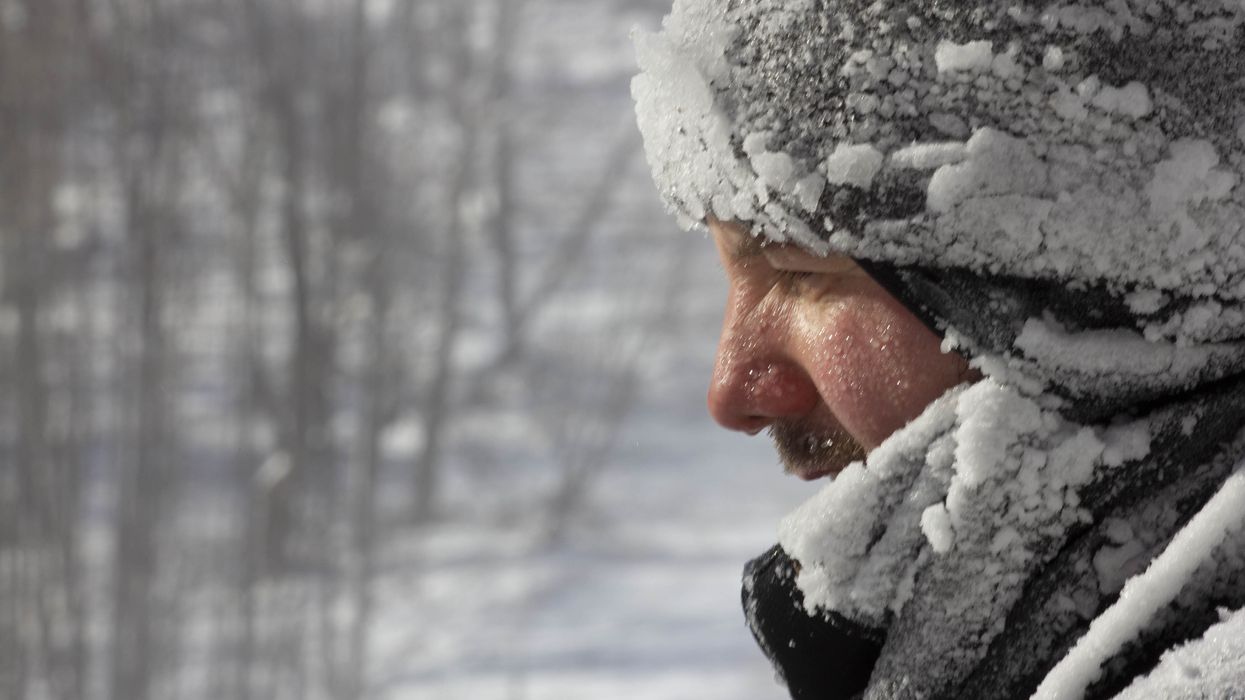
Jamie Scott shooting his latest time-lapse, "Winter"
Written by Jamie Scott
Synopsis: "Winter" is Jamie Scott’s third seasonal time-lapse film and the second collaboration with composer Jim Perkins. It is the culmination of 5 years of shooting across New York State and Montreal, Canada.
The film is a juxtaposition to the graceful, ethereal beauty of his previous film, "Spring", where the elements dance across the screen. Unlike Spring, Winter is a fast paced, frenetic film that’s created from the staccato of snow falling and is one of the hardest pieces Scott has ever produced. The film includes extreme macro shots showing individual ice crystals forming and snowflakes landing before they melt as well as super-wide drone shots capturing entire landscapes. Scott ties the elements of Winter together through expert photography, compositing and persistence to capture the season before it melts away.
Enjoy "Winter" and Jamie Scott's breakdown below.
Watch "Winter"
Time-lapse photography is an addiction for me. I get hooked on trying to problem solve for the perfect shot so I was hesitant to start my 3rd seasonal time-lapse film, Winter because I knew it would be more of a logistical challenge than a creative one. It would also be close to impossible to make it perfect because of unpredictable weather.
Originally, I intended to shoot entirely in Manhattan, however during my first attempt in Washington Square Park, I stood waiting in the cold with three cameras and just as the snow started, the sun set and there wasn’t enough light to capture it. To make matters worse, the snow quickly turned to rain and I was just getting soaked with my cameras.
However, I didn’t want to give up on New York City and tried again in Central Park but nothing more than a few flurries fell. Frustrated by the lack of progress, I decided to give up on NYC, and the following year, I set my sights north on Montreal. While the shoots proved successful, I was standing in parks all day which meant I could only get a few shots per snowfall.
By this point I realized I needed more flexibility so I rented a house in upstate New York with access to acres of land which gave me freedom to set up multiple unmanned cameras and fly a drone freely. From those initial 3 years of failed attempts, I learned:
When it Comes to Winter Conditions Be Prepared For Compositing
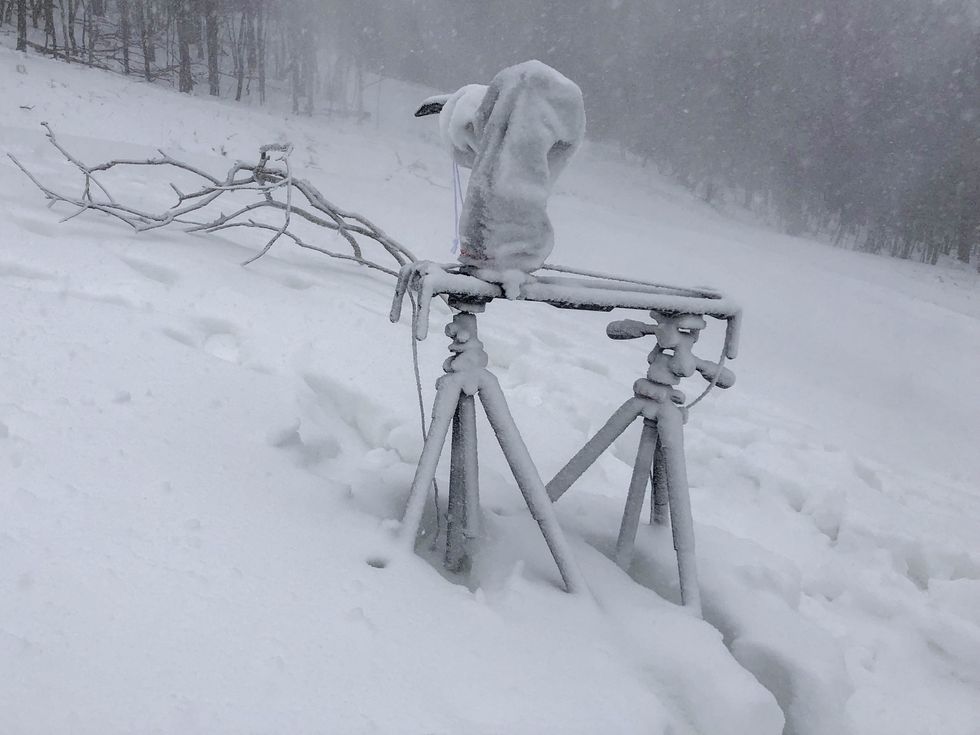
Camera covered for "Winter" time-lapse
Jamie Scott
Unless a blizzard strikes, it takes more than a day to get full snow coverage. You’ll get better shots if you can leave your cameras out for days at a time, but you can’t light wide shots at night so be prepared for post production work to blend the days together.
Pick the Right Camera...
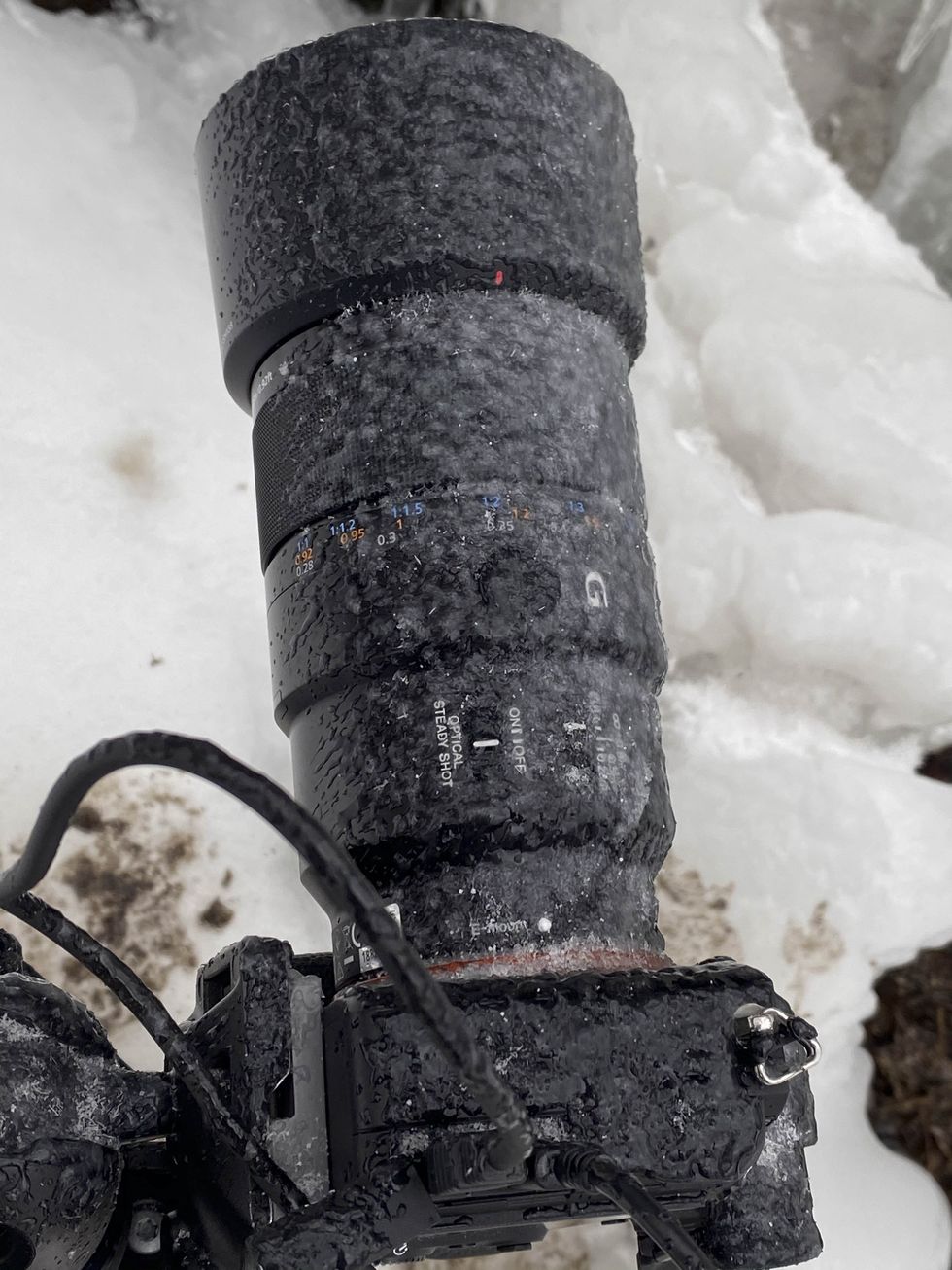
Icy camera shooting "Winter" time-lapse
Jamie Scott
DSLRs with mechanical shutters can jam when left outside for extended periods, therefore mirrorless cameras with electronic shutters are better. I shot with Canon R5s and Sony A7Rs and found Canons to be more reliable.
... And Make Sure It Has a Great Battery Solution
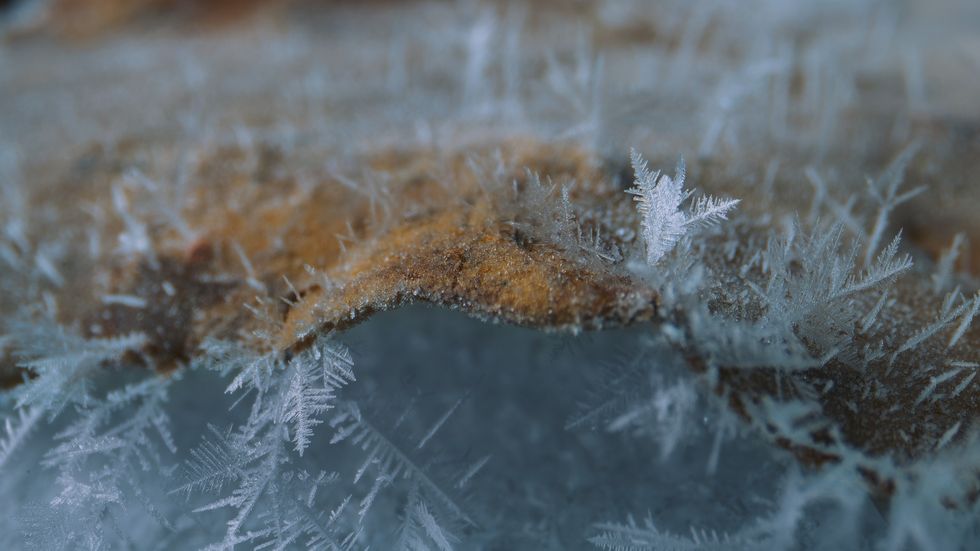
Still of hyper close-up in "Winter"
Jamie Scott
However, mirrorless cameras require a lot more battery power than DSLRs, and the cold exacerbates this issue. All the cameras used needed swappable external power. For the R5s I used Tether Tools USBC PD batteries. They have to be PD (power delivery) or they won’t work.
For the Sonys, there is an external battery pack that holds four batteries at a time. Both of these options allow you to shoot continuously
Appropriately Weather-Proof Your Gear
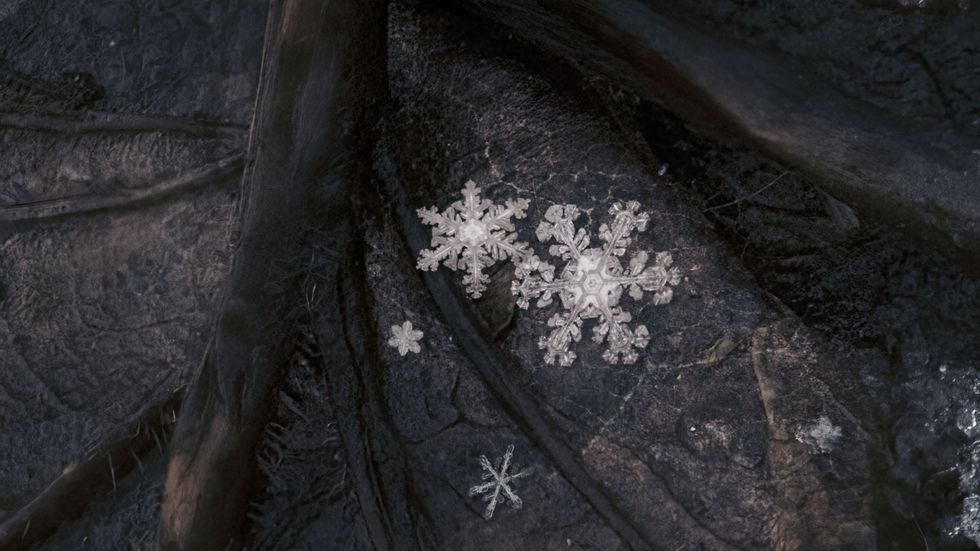
Detailed snowflake close-up in "Winter"
Jamie Scott
On shorter setups (1-2 days), rain covers will help keep cameras dry. For longer setups (several weeks) I built two weather-proof boxes out of plastic storage boxes to house the cameras. I cut a hole in the box and used a lens filter to point the camera through. I also added a quick release plate to mount the camera to.
Your Lighting Is Essential
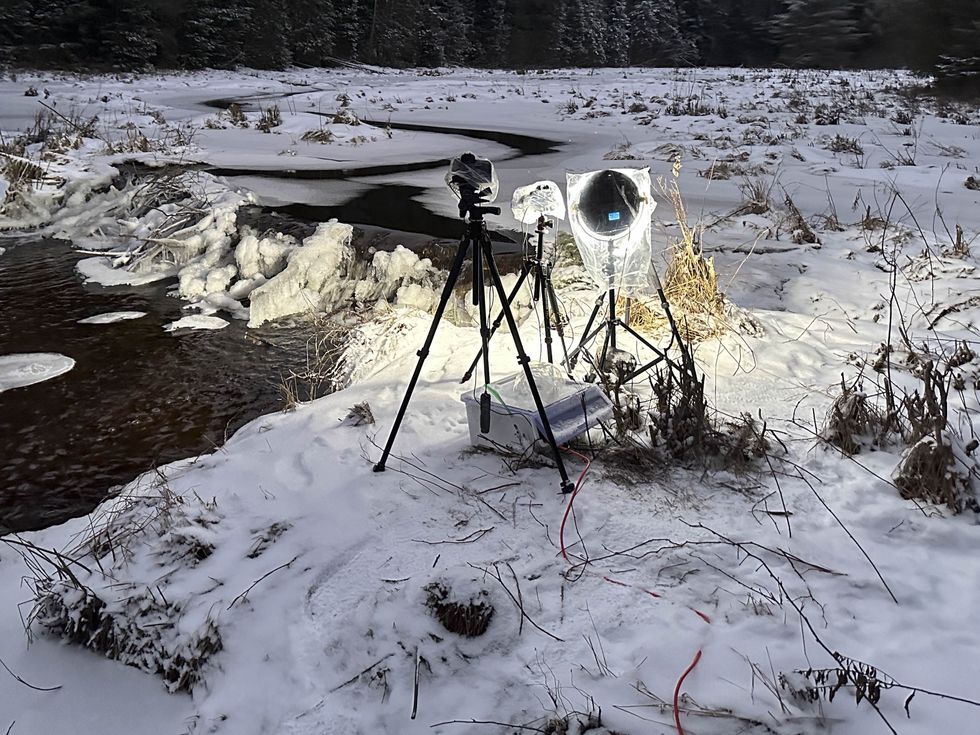
Lighting setup for "Winter"
Jamie Scott
Lighting is another important consideration. When I started renting properties, I could use wired lighting and preferred the Genaray Mini Moons because they’re light, portable and give off a diffused natural light. Also, frost and ice crystals mainly form at night and are best shot up close so I focused on these shots during night shoots as they are easier to light.
Don't Forget to Shoot Plates For Blending in Post
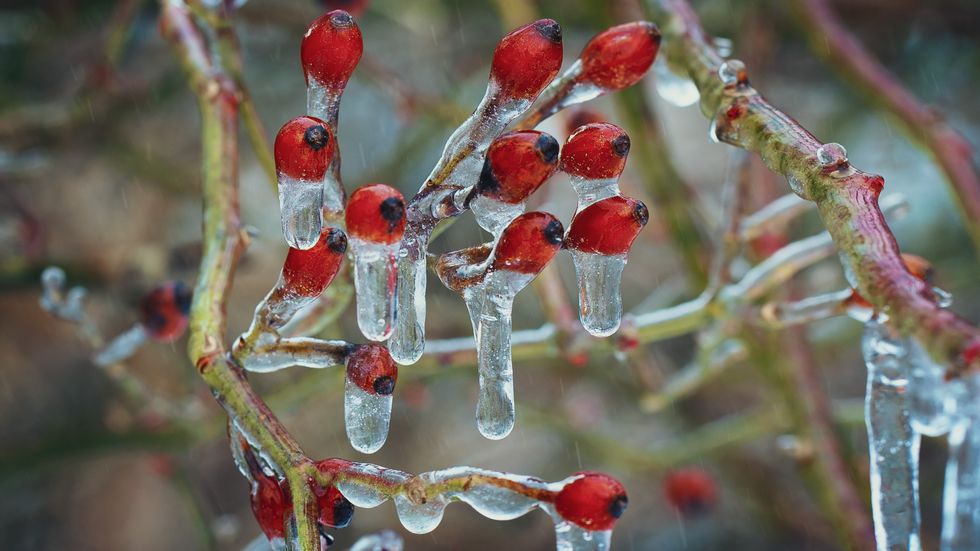
Frozen icicles in "Winter"
Jamie Scott
I always wanted to shoot the full extreme from a macro shot of a snowflake to the bird’s eye view so I used a Mavic 2 Pro drone to create wide landscape shots. I created waypoints and refined the move using Litchi, a 3rd party app, to smooth out the flight path.
By saving the exact coordinates, I could fly the same path repeatedly, and this allowed me to shoot plates with varying degrees of snow coverage. I then combined the plates in post-production.
Overall, this was one of the hardest, most challenging time-lapse projects I have ever done because the process forces you to be comfortable knowing that all your efforts could be wasted. You have to frame a shot and imagine how it will look with snow and ice and hope the depth of field and focal point match what you think the weather is going to do.












